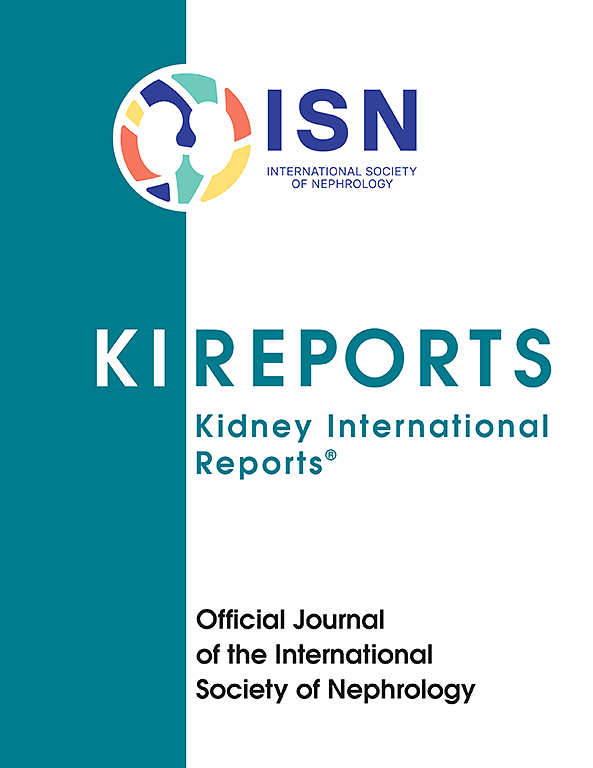Impact of Different CKD Definitions on Long-Term Renal Function and Mortality in a Population-Based Cohort Study
IF 5.7
2区 医学
Q1 UROLOGY & NEPHROLOGY
引用次数: 0
Abstract
Introduction
The adoption of age or individualized body surface area (i-BSA) estimated glomerular filtration rate (eGFR) thresholds could influence the prevalence and prognosis of chronic kidney disease (CKD). This longitudinal study with up to 15 years of follow-up in the general population, compares different eGFR thresholds for CKD definition: standard, corrected to i-BSA, and age-stratified. For each, we assessed the prevalence of CKD and the combined impact on rapid renal function decline (RRFD) and mortality.
Methods
Patients were classified as CKD according to the presence of significant albuminuria and/or different eGFR thresholds as follows: (i) < 60ml/min per 1.73 m2; (ii) < 60ml/min corrected to i-BSA; (iii) stratified by age, that is, < 75, < 60 and < 45 ml/min per 1.73 m2 if aged < 40 years, 40 to 65 years, and > 65 years, respectively. We performed adjusted Cox regression analyses to predict RRFD and global mortality.
Results
We analyzed 4952 participants (54% women; mean age: 52 years). Age-stratified definition resulted in 24 of 677 participants aged < 40 years reclassified as CKD, with no adverse outcomes; whereas 55 of 713 participants aged > 65 years were reclassified as non-CKD, with 12 deaths and 1 RRFD. After multivariate adjustment, the CKD group had a poorer prognosis compared with the non-CKD group independently of the definition used; hazard ratio (HR) and 95% confidence interval (CI) were 2.23 (1.59–3.12), 2.06 (1.46–2.90), and 1.64 (1.13–2.38) for the standard, corrected to i-BSA, and age-stratified definitions, respectively.
Conclusion
In our study, classification of CKD by age or i-BSA does not appear to improve prediction of RRFD and mortality.

求助全文
约1分钟内获得全文
求助全文
来源期刊

Kidney International Reports
Medicine-Nephrology
CiteScore
7.70
自引率
3.30%
发文量
1578
审稿时长
8 weeks
期刊介绍:
Kidney International Reports, an official journal of the International Society of Nephrology, is a peer-reviewed, open access journal devoted to the publication of leading research and developments related to kidney disease. With the primary aim of contributing to improved care of patients with kidney disease, the journal will publish original clinical and select translational articles and educational content related to the pathogenesis, evaluation and management of acute and chronic kidney disease, end stage renal disease (including transplantation), acid-base, fluid and electrolyte disturbances and hypertension. Of particular interest are submissions related to clinical trials, epidemiology, systematic reviews (including meta-analyses) and outcomes research. The journal will also provide a platform for wider dissemination of national and regional guidelines as well as consensus meeting reports.
 求助内容:
求助内容: 应助结果提醒方式:
应助结果提醒方式:


